32+ Sample Payroll Checks
-
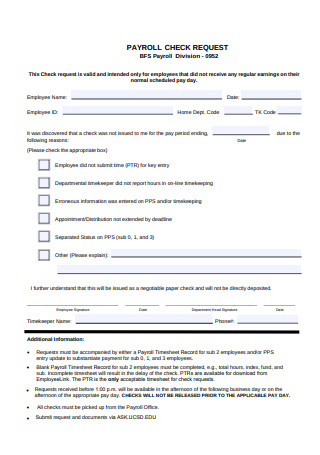
Payroll Check Request Form
download now -
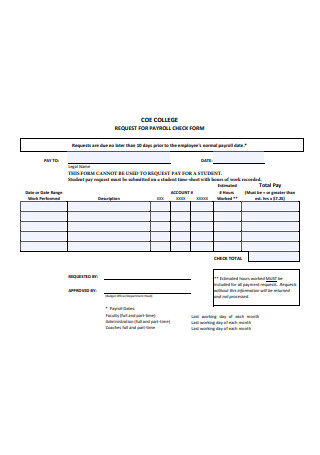
Request for Payroll Check Form
download now -

Payroll Employee Lost Check Form
download now -
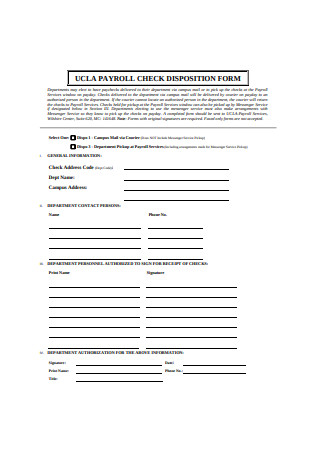
Payroll Check Disposition Form
download now -
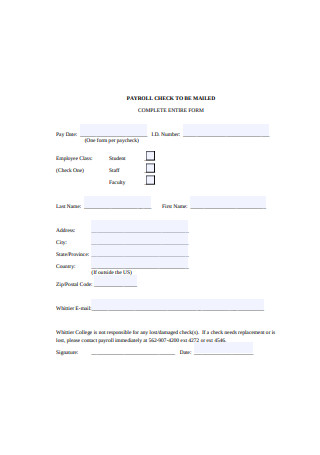
Payroll Check Sample
download now -
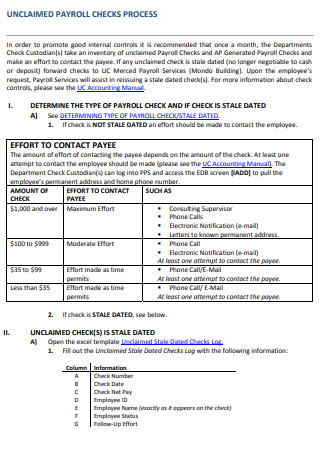
Payroll Check Process Example
download now -
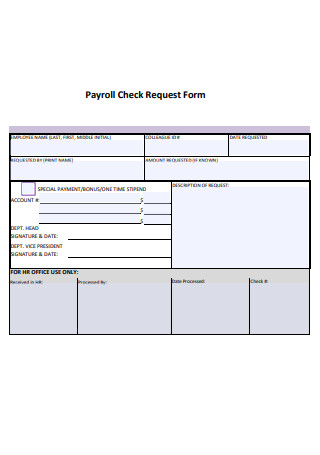
Payroll Check Request Form Sample
download now -
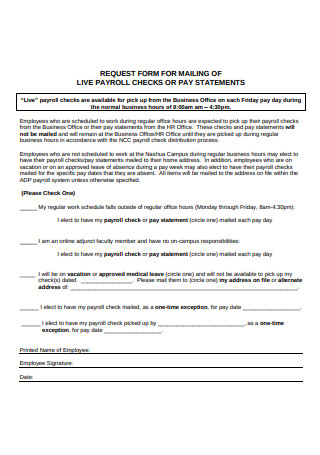
Sample Payroll Check Request Form
download now -
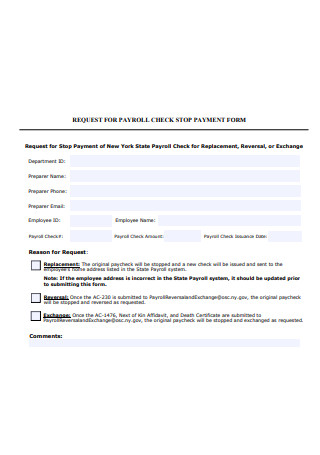
Payroll Check Stop Payment Form
download now -
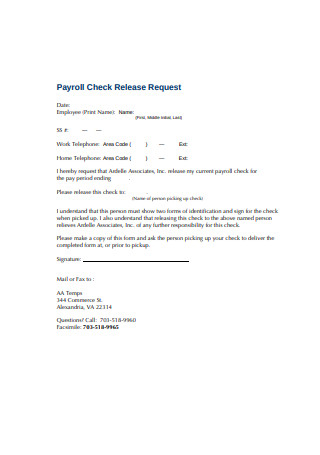
Payroll Check Release Request
download now -
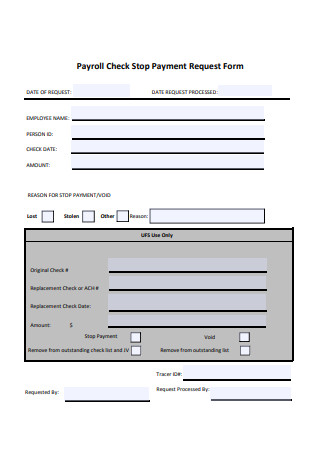
Payroll Check Stop Payment Request Form
download now -
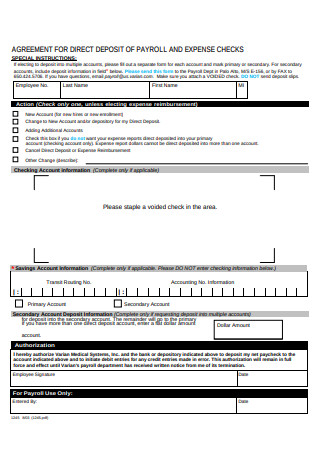
Agreement for Direct Deposit of Payroll Check
download now -
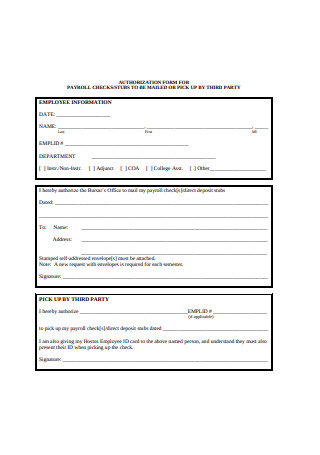
Payroll Check Form
download now -
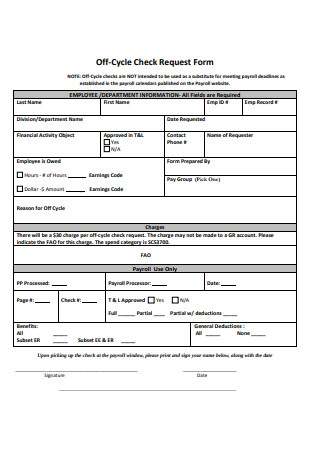
Payroll Check Request Form Example
download now -
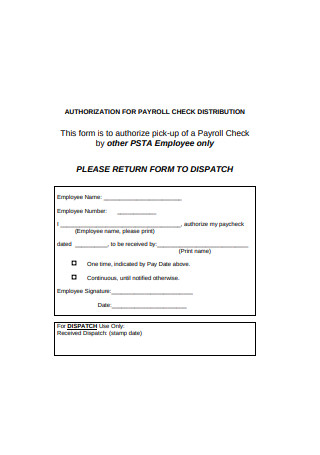
Authorization for Payroll Check Distribution
download now -
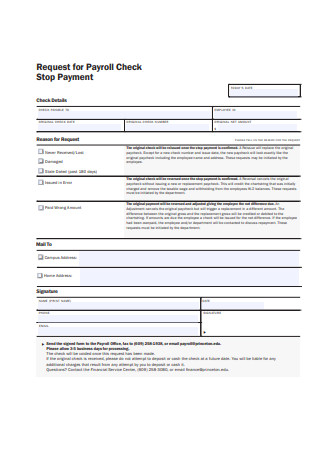
Request for Payroll Check Stop Payment
download now -
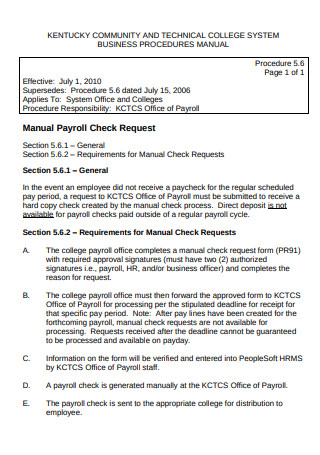
Payroll Check Format
download now -
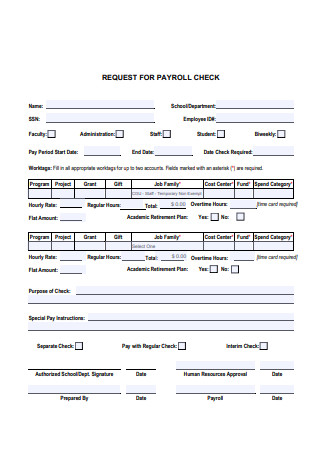
Request for Payroll Check
download now -
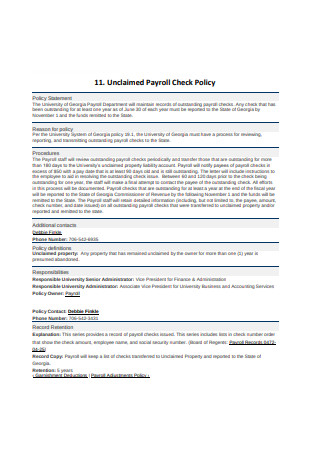
Payroll Check Policy
download now -
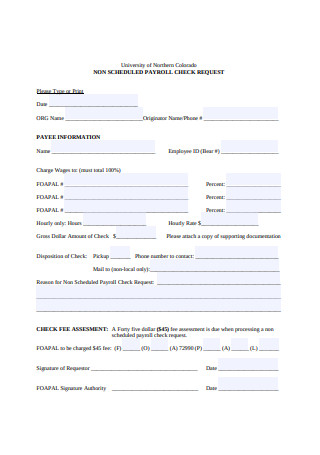
Non-Scheduled Payroll Check Request Form
download now -
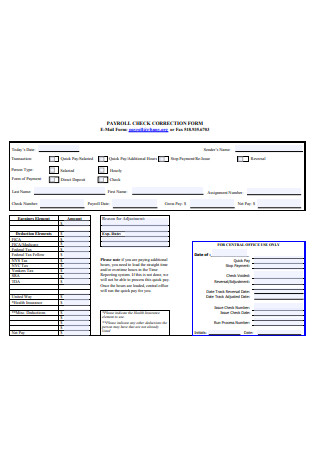
Payroll Check Correction Form
download now -

Payroll Stop Payment and Reissue Check Request Form
download now -
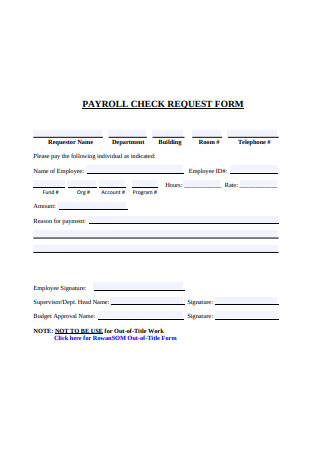
Basic Payroll Check Request Form
download now -
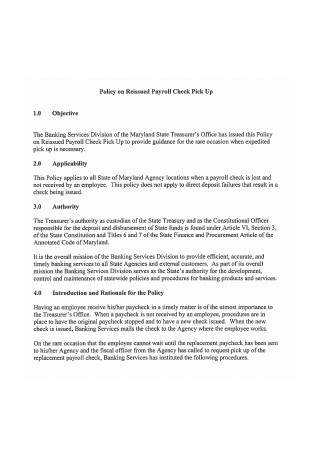
Payroll Check Policy Format
download now -
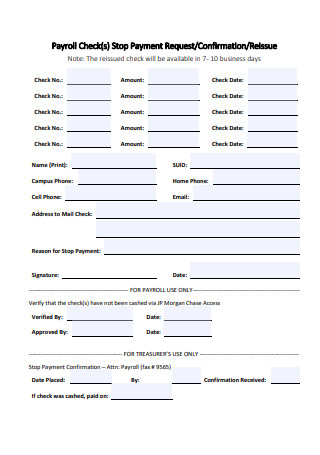
Payroll Check Example
download now -
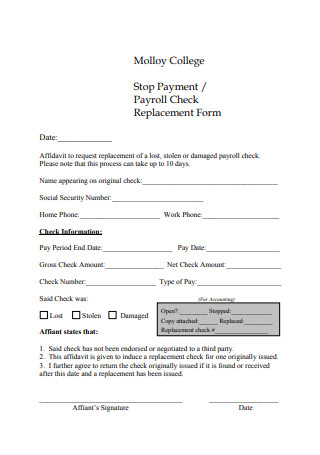
Payroll Check Replacement Form
download now -
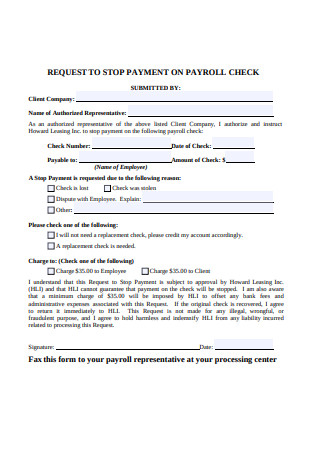
Request to Stop Payment on Payroll Check
download now -
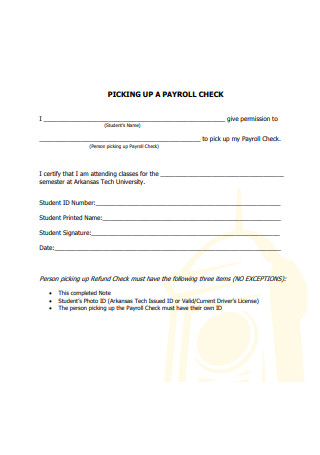
Standard Payroll Check
download now -
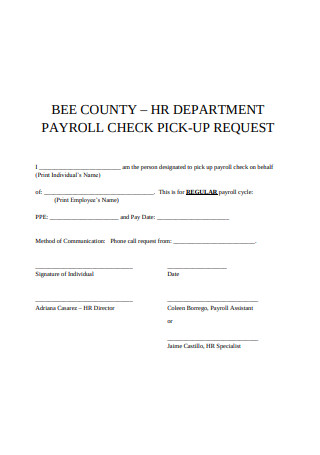
Payroll Check Pick-Up Request Form
download now -
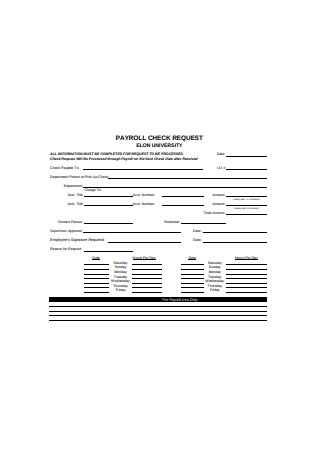
Simple Payroll Check Request Form
download now -

Payroll Replacement Check Request Form
download now -
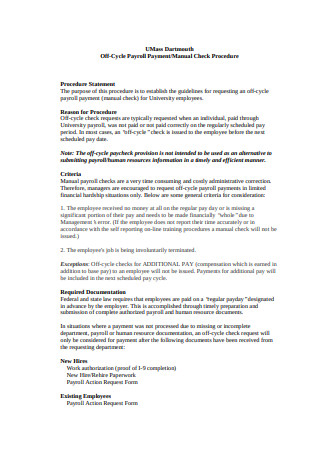
Payroll Check Procedure
download now -
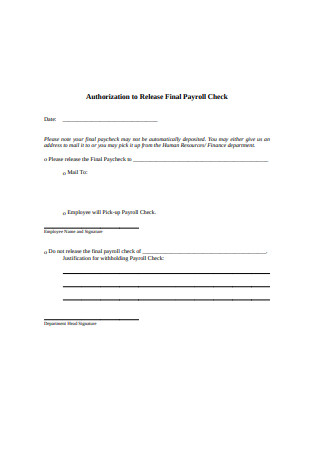
Final Payroll Check Form
download now -
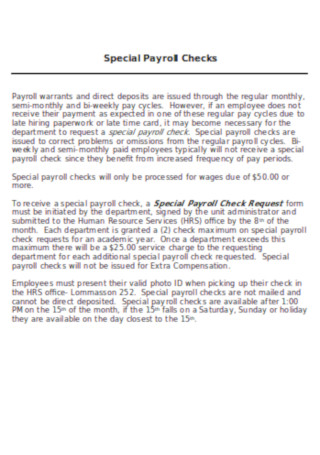
Sample Special Payroll Check Template
download now -
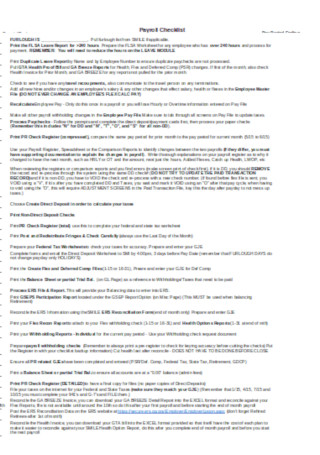
Sample Payroll Check Example
download now
FREE Payroll Check s to Download
32+ Sample Payroll Checks
What are Payroll Checks?
Importance of Managing Payroll Checks in Business
How to Create Payroll Checks
FAQs
Do banks cash payroll checks?
Can I print my own payroll checks?
Is it better to get paid by checks or direct deposits?
Who can sign payroll checks?
Can I deposit a check without a signature?
What are Payroll Checks?
As an employer, you can choose to pay your employees on an hourly, daily, weekly, monthly, or bi-monthly basis. Whatever payroll schedule you choose, an employee’s net pay will be reflected in his check. A payroll check is a financial document that you hand your employees in exchange for their services. Instead of paying cash to your workers, paying them by checks can be more convenient for you. You do not have to bring a large amount of cash to your office, as there will be a higher risk of getting robbed or having the funds stolen. Rather, you can issue your employees a payroll check; they can have the option to deposit the check on their bank accounts, or they may choose to have it encashed in any bank outlet or check-cashing stores.
Importance of Managing Payroll Checks in Business
Employees play a huge role in a company’s organization. Thus, businesses spend a gross amount of money, effort, and time in recruiting, training, and maintaining workers for the operation of their businesses. One of the essential responsibilities of a business owner is keeping and managing the employees’ payrolls. Workers need to able to rely on their company in expecting that they will be able to receive their salaries consistently regularly and without any delays.
How you pay your employees can greatly affect the financial stability of your business. It is not uncommon for employees to quit their jobs and shift to another reliable company because of delays in receiving their paychecks. Normally, processing a paycheck can be a hassle. It is time-consuming and complex, especially if it is for a large-scale company. The bigger the company, the higher the likelihood that it has a department specially dedicated to handling employee payroll and checks. On the other hand, for medium to small-scale business, it is wise to do your own management of worker’s payroll checks.
How to Create Payroll Checks
Paying your employees is a crucial part of owning a business. Hence, creating an organized payroll system is a must. According to the National Small Business Association (NSBA) 2014 Small Business Taxation Survey, keeping track of company payrolls ranked first as one of the most financially burdensome for business. A lot goes into the process of paying employees; this is why most large-scale businesses keep a separate department in-charge of handling employee wages. When we speak of payrolls, what comes to mind is the act of issuing checks. In this part of the article, we have gathered steps you can follow to help you create payroll checks for your employees.
You can ask your bank for blank checks you can easily fill-out. Consider calling your bank beforehand to check if there are available checks for distribution. If there are, you will need to verify and confirm your information with the bank representative. He will ask for what design you want for the check and how many you need. You can choose to have your checks picked-up from the bank’s counter or delivered through the mail.
The cost of ordering checks through a bank depends from one bank to the other. Typically, you will have to pay between $20 – $35 per checkbook. In case your bank runs out of checks for distribution, you may want to purchase from an authorized vendor duly accredited by the bank. The bank will provide you with a list of the certified vendors, including their contact information. Call the vendor and order your checks from them.
If you want to DIY your company payroll checks, the first thing you should do is purchase a payroll check formatting software. Although it is not necessary, it makes the process easier and faster. A payroll check format is already provided in the software. All you need to do is encode the necessary information, such as the name of the payee and the amount of the check. There are numerous check formatting software available online that you can try and offers a free trial.
Whether you choose to create the employee payroll checks using software or choose to do it manually, you will still need the following supplies: check paper stock and magnetic ink or toner. Most banks prefer (sometimes, strictly require) that you print your payroll checks or checks, in general, using check stock paper and magnetic ink. A check paper stock is a special type of paper with security features such as codes, micro prints, and watermarks embedded onto it. On the other hand, a magnetic ink is, from its name, an ink that uses magnet properties specifically used with bank scanners to make the check verification process secured. Its primary purpose is to print the MICR, the special bank code found on the bottom of the check. For the bank to scan the MICR, it must be printed using magnetic ink. If it is not printed using the magnetic ink, the bank will have to verify the check manually and will take a few days or a week to process.
Once you have the basic supplies, you can start making the payroll checks. Refer to your payroll list for the names of your employees and the corresponding salary addressed to them. If you have trouble formatting, you can browse our sample payroll check format.
To make your life easier, consider using online templates. You can find example printable payroll check templates above. All you have to do is find one that you like, download the file either in PDF or Microsoft Word format, fill it out, print, and sign.
Generally, yes. You can cash your payroll check at any bank. However, some banks may reserve their right to refuse to cash your check. Each bank exercises its discretion on whether to accept and encash checks coming from another bank. When you do choose to go to a different bank, other than the issuer’s bank, prepare a valid ID and make sure the payroll check is presentable. Ask to talk to the bank manager and explain your situation. Most of the time, they will heed your request, but other times they may reject it. They are not under any obligation to encash your payroll. The best option for you is to have the check cashed from the bank from where it was drawn from originally. Another option is to cash it from where the issuer holds an account. If you have an existing account on that bank, the better. Banks typically ask for a fee when encashing checks to persons without accounts. But if you decide to pick your employer’s account to draw the check, then it will be free. Yes, you can print your own checks. However, you need to make sure you have the following: check formatting software, check stock paper, a printer, magnetic ink or toner, and Magnetic Ink Character Recognition (MICR) fonts for the bottoms of the check. Most banks have standard guidelines when accepting DIY checks. Although it is not required by law, banks will persistently require you to have the resources mentioned above before making DIY checks. This will make the check verification process easier for the banks. All they will need to do is scan the MICR code below the check and determine whether the check is legit. But if you choose to choose handwritten checks, banks may impose hefty fees to get it cashed since verifying it will take longer, and the risk involved is higher. In today’s time, direct deposits are becoming significantly popular over paychecks. According to the National Clearing House Association, around 82% of American workers get their pay via direct deposits. What makes it appealing to the mass population of workers is its convenience. It is better to get paid through direct deposits since the money is easily transferred to your account in a few hours. Unlike paychecks, you will have to go through a bank process and screening to determine whether the check is authentic or not. Additionally, direct deposits are free. You don’t have to pay for hefty fees to cash your payroll. Overall, it makes the employees’ life much easier. No more waiting in line in banks to have a check cashed, and no more worrying about his paycheck getting lost. Ultimately, it saves time and effort. Technically, only authorized company personnel may sign an employee’s payroll check. Depending on the organizational arrangement of your company, there will be a person or group of persons assigned to sign the payroll checks. Usually, it will be your boss or any person holding an executive position in the company. Your boss has the option to delegate the task to his subordinate employees, such as those from the accounting office or HR department or any person tasked to handle the finances and employee salary. No, you cannot. Banks will strictly require you (as the payee) to endorse your paycheck to them. This lessens the risk of the bank losing money in case of future bank disputes. Endorsing a paycheck means you will need to sign your signature at the back portion with the phrase “for deposit only” together with your bank account number.Step 1: Request for payroll checks from your bank or authorized vendor
Step 2: Purchase a payroll check formatting software
Step 3: Order Supplies
Step 4: Create the payroll check
Step 5: Use online templates
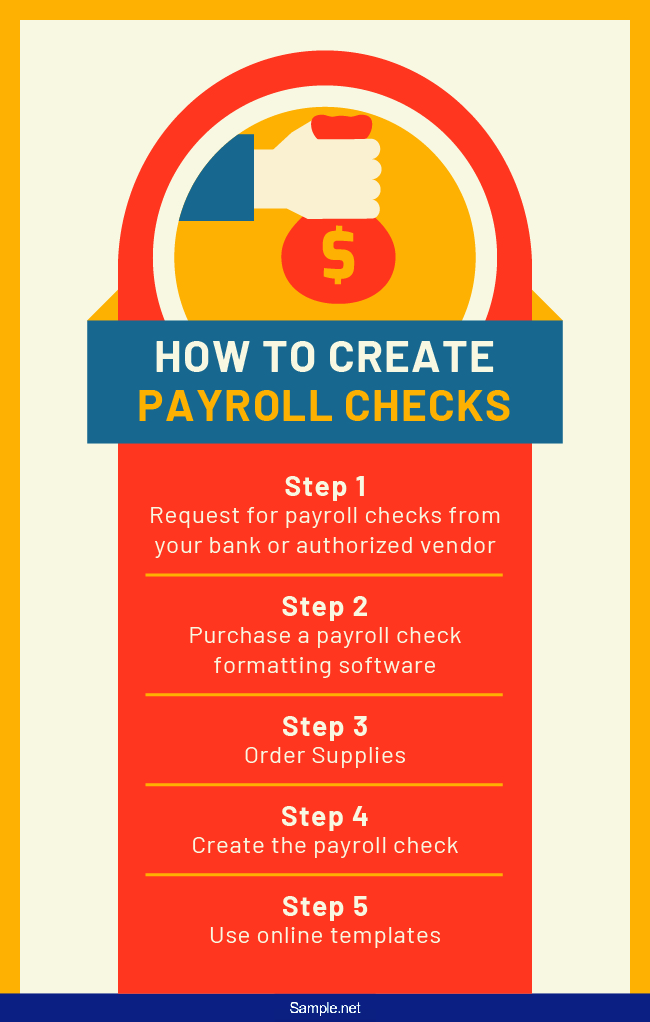
FAQs
Do banks cash payroll checks?
Can I print my own payroll checks?
Is it better to get paid by checks or direct deposits?
Who can sign payroll checks?
Can I deposit a check without a signature?
Operating a business is not an easy task in the least. You have to deal with the complexities of managing a group of people, your employees. One of the reasons why workers choose to stay in a company is because of their salaries. Every month they anticipate receiving their payroll checks to be able to afford basic necessities. As an employer, one of your responsibility is giving your employees their hard-earned paychecks. In the process, you need to make sure that their checks are accurate to avoid inconveniences when they reach the bank. Hence, remember to double-check before handing out the checks.
